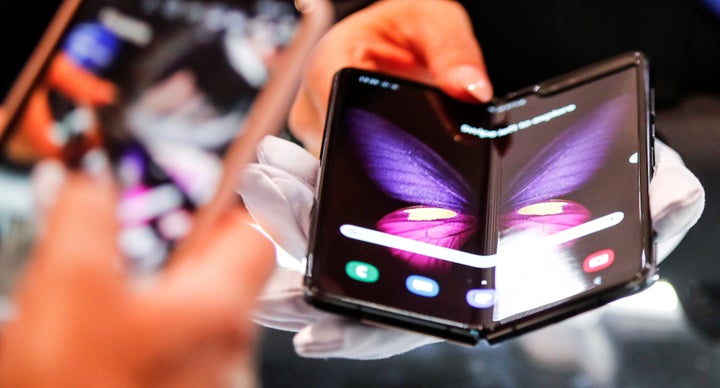
What are the best smartphones to release in 2019? We have perhaps never been as spoilt for choice as in recent times, with the emergence of new brands and the near incessant release of models for different price segments.
Be it a phone for Rs 6,000 or one for ten times that amount (or more), you will face a deluge of options. So which ones work best for you? Well, here is our attempt to simplify matters across different price segments.
For the latest news and more, follow HuffPost India on Twitter, Facebook, and subscribe to our newsletter.
Upto Rs 7,000
Redmi 8A
Rs 6,499
The Redmi 8A in best Xiaomi tradition bundles comparatively high end specs with competitive prices. It has a 6.2-inch HD+ display, 8-MP selfie camera, a Qualcomm Snapdragon 439, with 2GB RAM and 32GB storage. It has a 5000mAh battery that can go on for two days between charges.
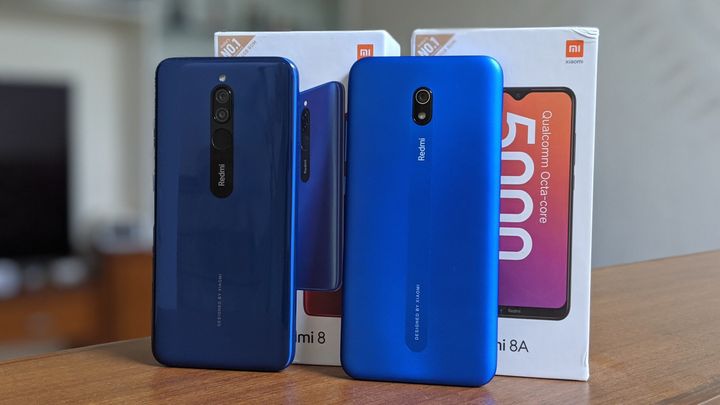
It sails through daily usage with ease, and despite the budget price tag, its design stands out and makes it stand out, making it a great starter smartphone.
Realme C2
Rs 5,999
Realme consolidated its position as the rising star in the Indian market on the back of devices like the Realme C2. It has a 6.1-inch HD+ display, 12-MP and 2-MP cameras, a 5-MP selfie camera, with face unlock, a MediaTek Helio P22 processor and 2GB RAM, 16GB storage. There’s a 4000mAh battery.
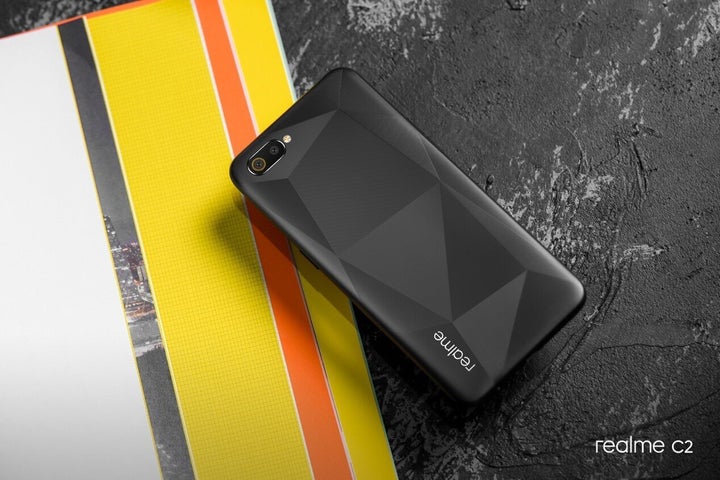
It’s not great for gaming, and lacks a fingerprint sensor, but the rear-cameras and the battery performance are strong selling points for people on a tight budget.
Rs 7,000—Rs 10,000
Redmi Note 8
Rs 9,999
For those with a budget under Rs. 10,000, the Redmi Note 8 is easily the best option. IT has a 6.3-inch full HD+ display, with Gorilla Glass 5 on the front and back. It uses a Qualcomm Snapdragon 665 processor with 4GB RAM and 64GB storage. The star performer is a quad-camera setup, with a 48-MP main sensor, 8-MP ultrawide, 2-MP depth sensor, and 2-MP macro camera, delivering photos and videos that are exceptional at this price. It also packs a 13-MP selfie camera, and a 4000mAh battery with support for fast charging.
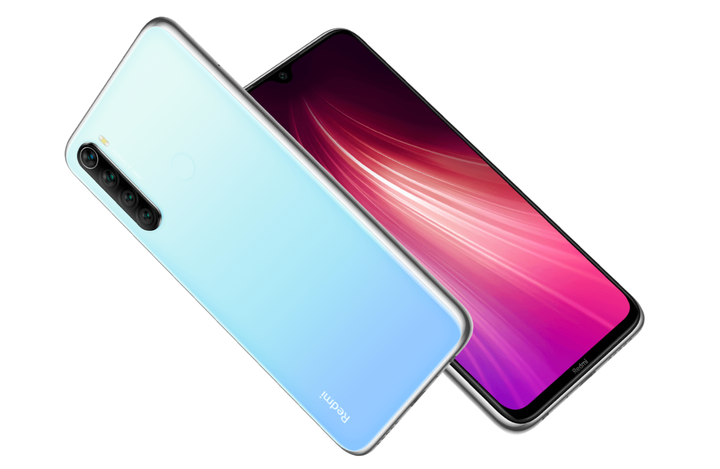
It works well for gaming (although at lower quality settings), and with its amazing camera package, offers staggering value for money.
Realme 5s
Rs 9,999
The Realme 5s matches the Redmi Note 8’s processor/ RAM/ storage specs, but it comes with a 6.5-inch HD+ display and lacks the glass back. It has a bigger 5000mAh battery, but lacks fast charging, and the same camera specifications on the front and back.
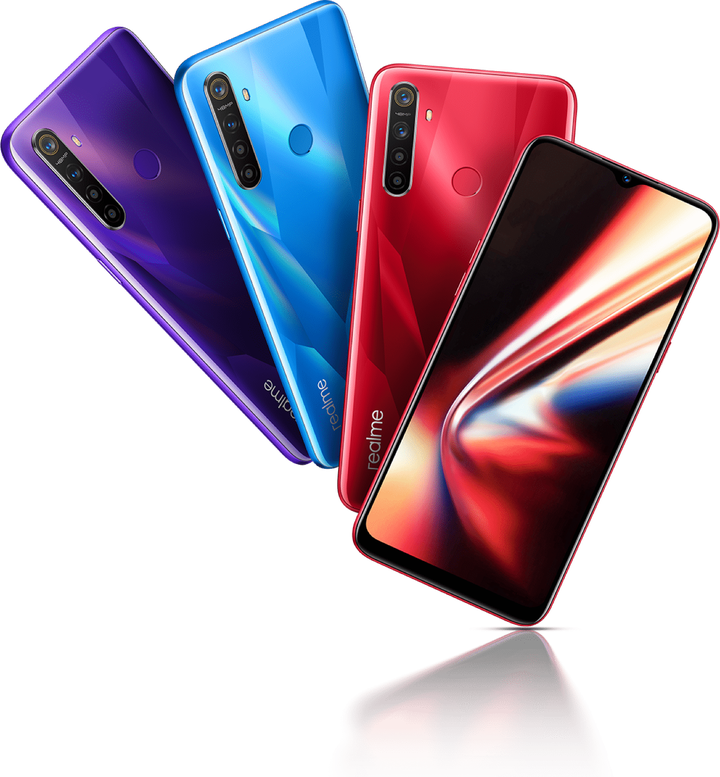
It seems to struggle a little more with high-end games, and the selfie camera was slightly disappointing, but it delivers slightly brighter and more colourful photos from the main camera, so depending on your priorities, it might be the better choice. Some might also like the brighter colours it is offered in—that back might not be glass, but it is very eye catching.
Rs 10,000—Rs 15,000
Redmi Note 8 Pro
Rs 14,999
Xiaomi’s Note series has been a bestseller and generally has set the benchmark for devices in the sub Rs 15,000 category. And the Xiaomi Redmi Note 8 Pro is no different. It is the only phone in this segment with a 64-MP main camera (plus 8-MP ultrawide, 2-MP depth, and 2-MP macro). There’s a 20-MP selfie camera, and it’s powered by the MediaTek Helio G90T with 6GB RAM. It has a brilliant 6.53-inch full HD+ display, and a 4500mAh battery.

Its cameras deliver excellent results, and the battery lasts for more than a day of heavy use, with suport for fast charging and a fast-charger in the box. Couple this with an eye-catching design, and this phone is a real winner at this price.
Samsung Galaxy M30s
Rs 13,999
The Samsung Galaxy M30s has further strengthened the brand’s presence in the sub-Rs 15,000 price band. The phone has a nearly bezel-less 6.4-inch full HD+ super AMOLED display. The rear camera has a 48-MP main sensor, 8-MP ultrawide, and 5-MP depth sensor. It has a 16-MP front camera, and runs on Samsung’s Exynos 9611 with 4GB RAM and 64GB storage and a huge 6000mAh battery that goes two days between charges (and a 15W fast charger in the box).
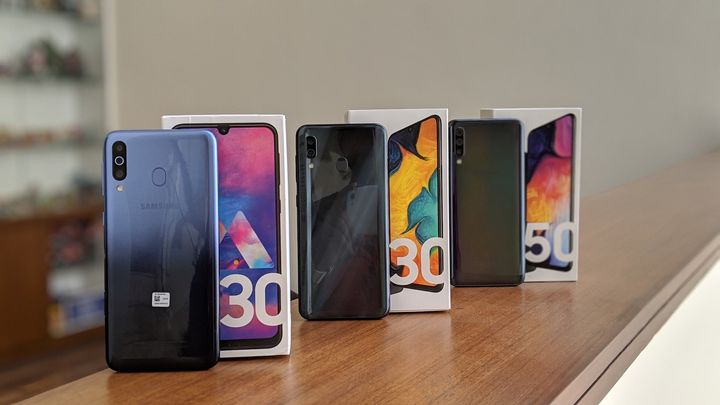
The camera takes detailed, bright photos, though it can go a little off-track in terms of colours. The display is bright and colourful, and the battery just keeps going.
Rs 15,000—Rs 20,000
Realme XT
Rs 15,999
Where Xiaomi got there first in the under Rs. 15,000 segment, the Realme XT was the first phone in this price band to get a 64-MP camera in India, along with an 8-MP ultrawide sensor, and a 16-MP front camera. The phone has a 6.4-inch full HD+ AMOLED display. It has a Qualcomm Snapdragon 712, with 4GB RAM, and a 4000mAh battery.
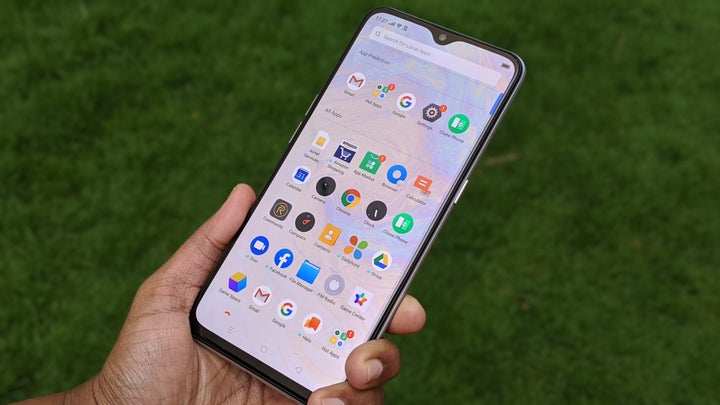
Its camera setup delivers some very good photographs even in low light, but other features like the in-display fingerprint scanner and capable performance even at gaming, along with Realme’s very fast VOOC charging, make it a very good pick.
Nokia 7.2
Rs 18,599
Nokia has been trying to make a comeback over the past couple of years but hasn’t been able to make much headway against the likes of Redmi and Realme. The Nokia 7.2 changes that to an extent—it comes with an excellent 6.3-inch full HD+ display, a 48-MP main camera on the back with a slightly old Qualcomm Snapdragon 660 processor and 4GB RAM, 64GB storage. It has a 3500mAh battery, and a clean and uncluttered Android interface.

It’s a beautiful phone with an eye-catching finish that gives a definite premium feel, and the display and camera are excellent. The only issue is that the processor is a little dated, and while it is fine for daily use, hefty tasks like graphically intensive gaming is a little unsteady.
Rs 20,000—Rs 30,000
Redmi K20 Pro
Rs 27,999
The Redmi K20 series marked Xiaomi’s attempt to get into the higher-price zone in the market, and the Xiaomi Redmi K20 Pro was its star performer. It comes with a very eye catching gradient finish on the back, reflecting light in flame like patterns. And for the price, it carried flagship level specs—a 6.39 inch full HD+ AMOLED display, Qualcomm Snapdragon 855 processor, 6 GB RAM and 128 GB storage, triple-rear cameras with a 48-MP main sensor, a 20-MP pop up selfie camera, an in-display fingerprint scanner and a large 4000mAh battery with support for fast charging.
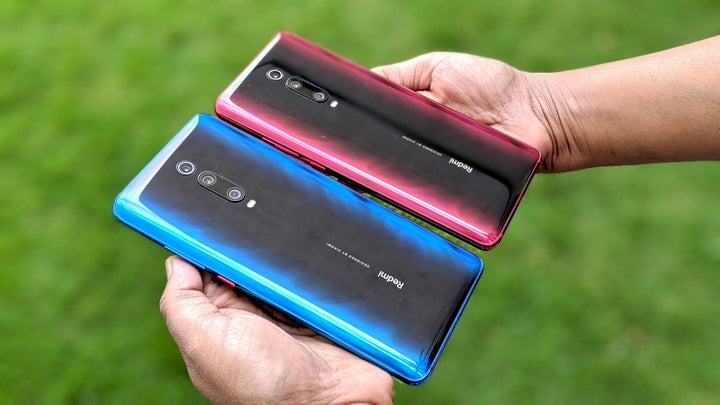
It was not just a spec monster and good looker, though—the Xiaomi Redmi K20 Pro was a very good performer in all departments be it gaming, photography, or just good old fashioned multi-tasking.
Realme X2 Pro
Rs 29,999
The Realme-Redmi rivalry extended into the higher price echelons with the launch of the Realme X2 Pro, which went toe to toe against the Redmi K20 Pro and even the OnePlus 7T. It comes with a 6.5-inch super AMOLED full HD+ display, a Qualcomm Snapdragon 855+ processor with 8GB RAM and 128GB storage. The phone has a quad camera set-up on the rear with a 64-MP main sensor, and a 16-MP selfie camera. It has a 4000mAh battery which can last a day of heavy use, and VOOC charging goes from 0-100% in half an hour.

It takes great photos, and delivers incredibly smooth gaming and multitasking. On the downside, the phone’s interface — ColorOS — is cluttered and clunky, but in terms of hardware, it’s the best pick under Rs 30,000.
Rs 30,000 - 45,000
OnePlus 7T
Rs 37,999
The OnePlus 7T is a complete beast in terms of specs, and has a very distinct design with a spherical camera unit at the back. It has a 6.55-inch Fluid AMOLED full HD+ display, with a Snapdragon 855+ processor. It packs 8GB RAM, and 128GB storage, and a 48-MP main sensor with 12-MP and 16-MP sensors, and a 16-MP selfie cameras. It has a 3800mAh battery, but it struggles to last a day—fortunately OnPlus’ Warp charge is extremely fast.
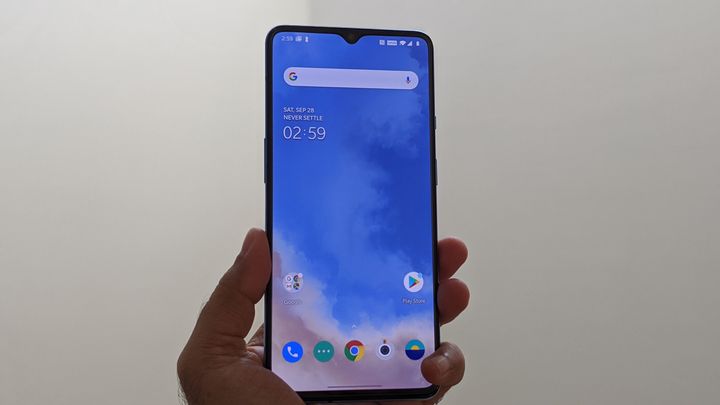
It comes with Android 10 out of the box and the cameras are capable of great photography, but it can be a bit inconsistent at times, which can be disappointing. It is one of the most powerful smartphones on the market capable of handling everything you throw at it, and a clean and uncluttered interface (if slightly buggy). With its specs, design, and relatively affordable price tag, the OnePlus 7T is one of the best phones available.
Asus ROG Phone 2
Rs 37,999
Targeted at mobile gamers, the Asus ROG Phone 2 is one of the most powerful devices out there. The Asus ROG Phone 2 comes with a massive 6.59-inch full HD+ AMOLED display with a 120Hz refresh rate. It has a Qualcomm Snapdragon 855+ processor, with 8GB RAM, 128GB storage, and loud stereo speakers. It comes with a huge 6000mAh battery. There’s a 48-MP main camera on the back with a 13-MP sensor as well, and a 24-MP selfie camera.

Gaming modes and customisations ensure a smooth gaming experience, and has a cooling system with heat vents, so it remains smooth and comfortable to use even during the most hectic PUBG sessions. The phone is mainly built for gaming, and the cameras are a little modest, but for the price, it’s a gamer’s dream.
Above Rs 45,000
Samsung Galaxy Note 10+
Rs 79,990
If you are looking for the best Android phone around, just go for the Samsung Galaxy Note 10+. It has a 6.8-inch quadHD+ super AMOLED display, an Exynos 9825 processor, 12GB RAM, and 256GB storage. There are four camera sensors on the back (two 12-MP, one 16-MP, and one VGA), and a 10-MP selfie camera. It has a large 4300mAh battery that lasts a day of use.

Its display is the most stunning in terms of brightness and colours, and it’s powerful enough that you can connect it to a desktop and use it like a PC. It delivers some of the best pictures you can get on a phone (though a little oversaturated). Samsung also brings the S-Pen stylus to the table with its Note series, which lets you make notes, edit images, and a lot more. It’s still the best stylus available and the phone is perhaps the most powerful and versatile Android phone you can get today.
iPhone 11 Pro
Rs 99,990
After a few generations of incremental change, Apple once again took a huge leap with the iPhone when it made the iPhone 11 Pro. It has a 5.8-inch retina AMOLED display, and triple 12-MP cameras on the back. It’s powered by Apple’s A13 processor, which can handle any task you throw at it, from high end games to editing videos and composing music.
The design, with the triple-camera arrangement in the back might not appeal to everyone but the smooth glass texture is unmatched, as is the quality of the display. The triple-camera setup is the star of the show with the quality of wide and zoomed shots in realistic colour and detail being incredible.
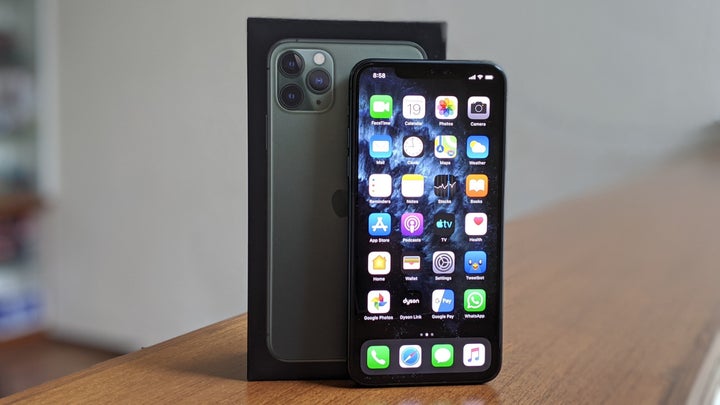
Face unlock works smoothly and the app ecosystem that Apple has is unmatched. And with the Pro, Apple’s got a phone whose battery can easily see more than an hour of use, and charges very quickly too. It still costs a phone, but if money is no object, then this is the phone you want.
One more thing
The ‘budget’ iPhone, the iPhone 11, is another amazing device to buy and if you’re not interested in going with Android, but don’t want to spend nearly a lakh on a phone, then you should definitely consider going with this one. Read our review to know more. At the same time, if you’re looking for a top-flight Android experience but the Rs 80,000 sticker on the Samsung Galaxy Note 10+ is a little too rich for your taste, take a look at the OnePlus 7T Pro, priced at Rs 53,900.
But if you’re looking for a phone that is like nothing else on the market, and budget isn’t a constraint, check out the Samsung Galaxy Fold.
Samsung Galaxy Fold
Rs 1,64,999
The Samsung Galaxy Fold… folds. The smartphone-cum-tablet has a 7.3-inch foldable AMOLED quadHD+ display that folds, leaving you with a 4.6-inch outer display. It has a Qualcomm Snapdragon 855, 12GB RAM, and 512GB storage, with a triple camera on the phone’s back, with two 12-MP sensors and one 16-MP sensor. On the front is a 10-MP and 8-MP setup for selfies. It has a 4380mAh battery which struggles to last a full day, not surprising considering the screen size.
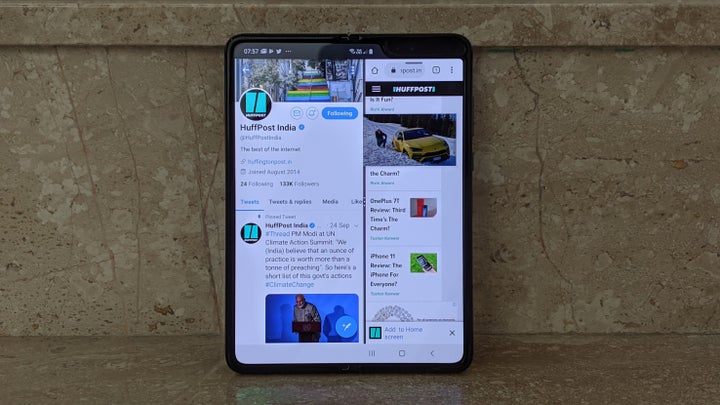
The foldable design turns heads, but it also makes the phone very fragile, and also quite heavy at 263g. The content switches from phone to tablet mode very smoothly though, so you can easily switch to the large screen experience whenever you want. But this phone isn’t really about specs or performance — it’s about standing out from the crowd, and if you’re willing to pay the very hefty price for it, then you’ll definitely stand out, though with more folding phones (that are looking very exciting at this stage) like the new Moto Razr and Microsoft’s new Surface devices on the way, that might not last for very long.